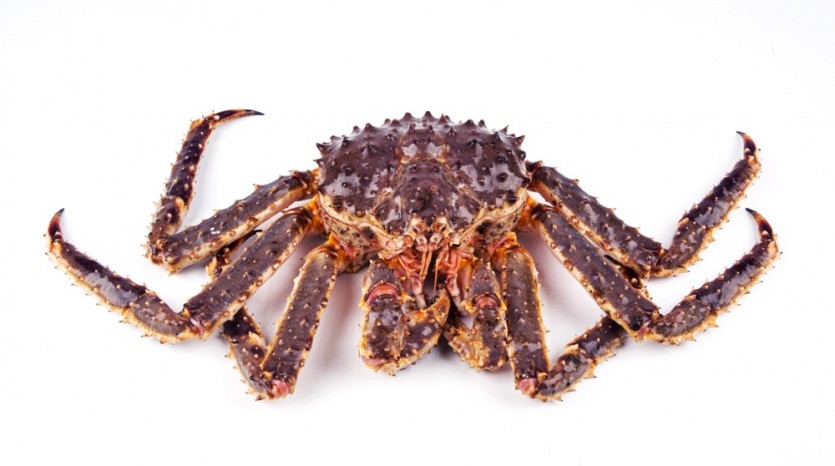Russian Crab Imports: China's Live Up 50%, Japan's Frozen Snow Crab Up…
페이지 정보
본문

China's imports of live and fresh crabs from
Russia increased by 50% to over 30,000 tons.
According to Minato Shimbun, in 2023, China's imports of live and fresh crabs
from Russia increased by 50% (approximately 10,000 tons) from the previous year
to 30,105 tons. According to statistics from the China General Administration
of Customs, this was the highest number since records began in 2015. A Japanese
trading company said, "It's shocking that the number of king crabs has
increased by 10,000 tons. This year, Far Eastern king crabs will no longer be
available in Japan."
According to the trading company sources, 80% of live imports to China are king crabs. In 2023, it is estimated that 3,000 to 4,000 tons of crabs from the Barents Sea were brought in.
Frozen crabs increased rapidly by 3.3 times to 10,774 tons, significantly breaking the record high since 2015. Several trading companies believe the quantity imported into China by Russian distributors as inventory with no sales destination yet determined has increased the import volume. Another trading company analyzed that the increase was due to increased demand for sushi at Japanese restaurants in places like Shanghai, and a fall in the price of frozen products.
Import to South Korea in 2023: 4% increase to 15,000 tons
In 2023, South Korea's imports of Russian live crabs increased by 4% from the
previous year to 14,764 tons, the highest since 2014. According to statistics
from the Korea International Trade Association, while live snow crabs decreased
by 4% to 9,181 tons, other crabs (such as king crabs) increased by 20% to 5,583
tons. A trading company said, "In the first half of last year, imports
increased due to the won's appreciation, but in the second half, imports
stalled as the won weakened."
Frozen crabs produced in Russia have increased rapidly by 2.3 times to 10,087 tons. Of this, the volume of king crab increased by 72% to 1,095 tons, and other types of crab (such as snow crab) increased by 2.4 times to 8,992 tons.
Regarding the volume of frozen crabs, one trading company explained, "To transport frozen products from Busan, South Korea, where frozen products are concentrated, to China or Vietnam, a sanitary certificate and a certificate of origin must be issued, so they must be cleared through customs in South Korea." Another trading company estimates that "Korea's frozen product consumption is probably around several hundred tons a year."
Japanese imports of frozen snow crabs in 2023 increased by 18%
In 2023, Japan's import volume of frozen crabs from Russia increased due to
falling prices. According to the Ministry of Finance's trade statistics,
imports of frozen snow crab from Russia rose 18% from the previous year to
13,079 tons, the highest since 2012. According to a trading company, the main
reason for the increase was the influx of many snow crabs (Opilio species) from
the Barents Sea caught by the Antey Group and the arrival of the 2021 catch.
The ratio of live products produced in the Russian Far East, which is more expensive than frozen products, will rise, and the shipment to China and South Korea will increase. On the other hand, it is difficult to significantly increase the survival rate of Opilio species from the Barents Sea due to transportation time and distance issues.
Before the U.S. embargo on Russian products, most of these crabs were exported frozen to the U.S. Still, following the U.S. embargo, frozen crab imports to Japan began in earnest in 2023. In particular, Antey Group operates fishing vessels with airblast freezers in the Barents Sea, similar to fishing vessels in the Far East, a form that Japan has accepted.
The ratio of imported frozen snow crabs from Russia to total imports was 69%, the highest since records began in 1990. The average imported unit price of frozen snow crabs from Russia was 34% lower at 1,940 yen/kg ($12.92/kg).
Imports of frozen king crab (including blue king and red king crab) from Russia increased by 2.2 times to 3,506 tons. While shipments from the Far East have decreased, the arrival of large-size king crabs from the Barents Sea caught by the Northwestern Fisheries Consortium (SZRK) has increased.
Russian-produced products accounted for 97% of the total imported frozen king crab. The average imported unit price of frozen king crab from Russia fell sharply by 55% to 3,375 yen/kg ($22.47/kg).
Other Russian products include frozen golden king crab, which increased by 33% to 434 tons, and frozen hairy crab, which increased by 19% to 62 tons.
While frozen products increased, live snow crabs, in high demand in China and South Korea, decreased except golden king crab. Of the live crabs imported from Russia, snow crabs were down 40% to 567 tons, king crabs were down 15% to 231 tons, and hairy crabs were down 45% to 16 tons. The live golden king crab volume was 36 tons (zero last year).
Of Japan's imports of prepared crab products, the volume of shelled meat imported from China, where it is processed, decreased by 20% to 746 tons, the lowest since 1991, while imports from Vietnam doubled to 2,112 tons, the highest ever. According to a trading company, the increase was due to the processing of opilio species from the Barents Sea caught by SZRK in Vietnam


 DAITO KOUN CO.,LTD
DAITO KOUN CO.,LTD
